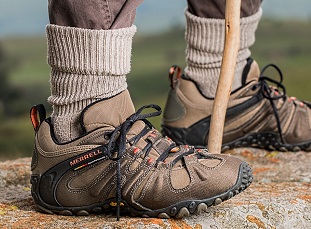By Dylan Stuntz, American Forests
With Lyme-disease-carrying ticks an ever-growing concern, and disease-carrying ticks found in all 48 contiguous states, proper tick etiquette before and after any outdoor walk is important! With these foolproof steps, you’ll be fully ready to go out without fear.

Photo Credit: Jonathan Harford
STEPS TO TAKE BEFORE YOU LEAVE THE HOUSE
Know where ticks are found!
- Ticks can be found in a variety of locations, but it’s generally safe to assume that any tall grass, low-to-the-ground shrubs or wooded plants have ticks in them. Ticks can even be found in your own backyard.
- If you walk through grass as high as your ankles, it’s safe to assume that you could potentially be carrying a tick. Think about the walk you’re about to take and plan accordingly.
Cover up as much as possible
- Limit the amount of exposed skin! A tick can’t bite you if it can’t find anything to bite. Wear closed-toed shoes, shin-high socks and long pants.
- Tucking your pant legs into your socks can be one of the most effective and easiest ways to prevent transmission.
Potentially treat your clothing with permethrin
- Permethrin is an insecticide that repels ticks and prevents them from grabbing onto your clothing. It can be sprayed on clothing, shoes or even gear such as backpacks!
- This step does take some planning ahead, as it does take a few hours for the clothing or gear to dry after being treated. That being said, it lasts for 3-4 weeks, so you can easily prep ahead of time!

AFTER YOU RETURN
Check your clothing for ticks
- Ticks love to hang onto clothing, and can be brought into your home this way. Carefully inspect all outer layers of clothing and gear for ticks.
- To kill any ticks found on clothing, you can put them in a tumble dryer for 10-15 minutes, and the heat should overwhelm them. If the clothes are dirty, wash them in hot water. Make sure the water’s hot, because cold or lukewarm water will not kill the ticks!
Do a tick check
- Inspect every part of your body for ticks, they can be as small as a poppy seed!
- Make sure to check between joints (behind the knees, elbows, armpits), behind your ears and anywhere covered in hair (behind the neck) as tics love warm, dark places.
Take a shower
- Not only is it a great way to clean off after a fun hike, it’s also an easy way to wash off any unnoticed ticks, and a perfect time to do a tick check.
Check your furry friends!
- Ticks don’t discriminate, and love to jump onto any mammal that walks by. If you’ve gone hiking with your dog, make sure to check that they are tick-free as well. Check out this guide from petMD for more!

Photo Credit: Max Pixel
IF YOU FIND A TICK
Don’t panic
- Your odds of catching Lyme disease in the first 24 hours are extremely low. The earlier you spot an unwanted tick, the better, so make sure to do a check early. Proper removal of ticks is important though, so stay calm, take a deep breath and prepare to remove the tick.
Use the proper tools
- Use tweezers, a tick spoon or a tick key to remove the tick. Do not use your fingers! If you squeeze the tick it can panic and spit up any nasty pathogens it may be carrying. Also, do not use a lighter to burn it out! That makes them regurgitate and increases the chance of infection.
Apply steady, even pressure when removing the tick
- If using tweezers, grasp the tick as close to the base as possible. Don’t squeeze!
- If using a spoon or key, slide the divot around the body of the tick.
- Slowly and steadily pull upward, without twisting or jerking. This way parts of the head or mouth won’t remain embedded in your skin, which can raise your risk of infection.
- If some mouth parts stay embedded, try to remove them with tweezers. If you’re unable to remove them, thoroughly clean the area and wait for the skin to heal.
- If you want to watch a video tutorial, check this one out!
Record, and then dispose of the tick
- See if you can identify the species of tick, as this may be helpful if you do require medical attention.
- If you’re unsure, take a picture of it!
- Either drown it in rubbing alcohol, save it in a sealed container or flush it down the toilet. Do not crush it with your fingers! This can expose you to any sort of pathogen the tic may be carrying.
Clean the bite site
- Using rubbing alcohol or an antibacterial soap, clean both the bite location and the tool you used to remove the tick.
Pay attention to the bite site
- Symptoms of Lyme disease can include a bull’s-eye rash, or general flu-like symptoms such as fever, achiness or a general lack of energy. Follow the link to see examples.
- These symptoms can develop 3-30 days after being bitten, so pay attention to the bite site for the next month. If any symptoms develop, contact your doctor immediately.

Photo Credit: Fairfax County
Following these instructions, you will be safe and secure when venturing outside. Don’t let ticks scare you off from travelling outdoors! Our outdoors are too beautiful and important to let these little nuisances prevent you from enjoying them.